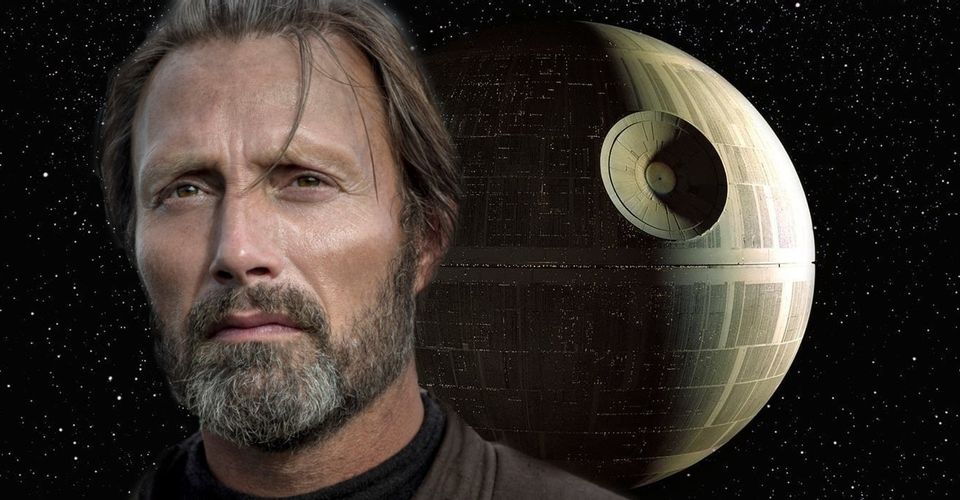Star Wars: Why the Death Star Had a Major Thermal Exhaust Port Flaw

Star Wars mythology accounted for the Death Star’s fatal flaw… eventually. In 1977’s original Star Wars movie, the grand climax pits a plucky squad of Rebel X-Wings against the mighty Death Star – a grand battle station and the peak of the Empire’s technological achievements. Thanks to a certain team of spies, the Rebel Alliance know that the Death Star’s weakness is a reactor accessible via an exposed thermal exhaust port. By combining his ace flying skills with a newly-found aptitude for the Force, Luke Skywalker is able to drop a pair of missiles down this chute, triggering a chain reaction that destroys the Death Star and deals a crippling, albeit momentary, blow to the Empire.
Star Wars is full of small curiosities. Luke Skywalker supposedly pointing a lightsaber directly at his face, Stormtroopers bashing their heads, etc. For many years, Star Wars fans wondered how such an obvious and fatal flaw could be left unaddressed by an organization as mighty as the Empire. Palpatine’s regime had a stranglehold on the entire galaxy thanks to years of cunning chess moves, while credits, time and manpower had been plowed into the construction of the Death Star. How in the name of Alderaan did no one in the organization realize that the vulnerable reactor was a giant, neon target presenting itself to any competent Rebel pilot?
Although this infuriating conundrum went officially unanswered for many years, a solution did arrive thanks to both 2016’s Rogue One: A Star Wars Story and the Catalyst tie-in prequel novel. Rogue One introduces Mads Mikkelsen’s Galen Erso, a scientist coerced into aiding the Empire in the construction of their very first Death Star. Feigning cooperation, Galen secretly plotted revenge against his employers, and wove a deadly weakness into the Death Star – an exposed reactor that would take out the entire station when detonated. Galen successfully crafted this opportunity, then informed the Rebellion about his treachery, resulting in a team led by Galen’s own daughter (Felicity Jones’ Jyn Erso) stealing the Death Star plans, delivering them to the Alliance, and letting the good guys know about Galen’s act of sabotage.

However, this explanation still leaves a few points unanswered. How was Galen able to change Death Star blueprints that had been in existence since before the Clone Wars without being thoroughly questioned and audited? Why didn’t any Imperials suspect that Galen might not have Palpatine’s best interests at heart? And didn’t the workers actually building the Death Star notice the weakness when they were putting Galen’s designs into action? These smaller issues are addressed in the Rogue One prequel novel Catalyst by James Luceno. Catalyst delves into the political intricacies of building a giant space station, and reveals a web of bureaucracy that laid the foundations for Galen’s deception.
The Death Star was built by Geonosian drones led by Poggle the Lesser, and each aspect of the station was designed by separate contractors who rarely knew the full details of what they were working on. Very few outside of the Empire’s inner circle possessed a full picture of what was being built. Moreover, the Death Star’s construction can perhaps be likened to the 1960s space race of the real world. Fears the Separatists were also building a giant super-weapon pushed budgets and timelines to wildly unrealistic levels, while the Battle of Geonosis delayed work on the laser (Galen’s area of expertise). Unsurprisingly, the Geonosian workers were unsatisfied with the arrangement and rioted in rebellion of their treatment. Continuously delayed, the Death Star’s construction was also the backdrop for a proxy battle between Orson Krennic and Wilhuff Tarkin, both of whom wanted the space station’s command. Krennic began with the upper hand, but with Tarkin circling, was desperate to ensure that construction went smoothly.
Catalyst helps paint a starkly realistic depiction of the Death Star’s creation. So often in real life, an expensive construction project is subject to delay, bureaucracy, politics and mismanagement, and small but vital details are overlooked as a result. Although Star Wars usually portrays the Empire as a rigidly organized and disciplined bunch, the Death Star’s chaotic origins and aura of secrecy would’ve been the perfect climate for a saboteur to operate within. This is highlighted in the Rogue One novelization, in which Galen deliberately makes the flawed design the most attractive for those in charge, but advises against it to avoid suspicion.
About The Author


















